Are you a contractor?
Join our network and attract real clients!
Table of Contents
5 min read
What You Need to Know About Industrial Respirators
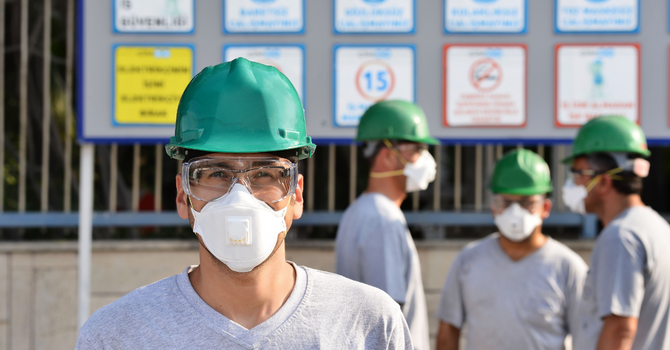

5 min read
What You Need to Know About Industrial Respirators
Advice for contractorWhat You Need to Know About Industrial Respirators
The construction and renovation industries pose several risks in terms of employees’ health and safety, especially when it comes to contaminants they may inhale. Such chemicals come in the shape of gas, vapours, fumes, dust, and fog. Luckily, various protective measures are available and tailored to select situations, such as prevention, training, and in this case, wearing the right mask or industrial respirator.
As a contractor and employer, it’s your duty to provide, free of charge, such masks and respirators, as well as select the appropriate respirator fit for the task that’ll be accomplished over the course of the project. Keep reading to learn more about it!
When should you use an industrial respirator?
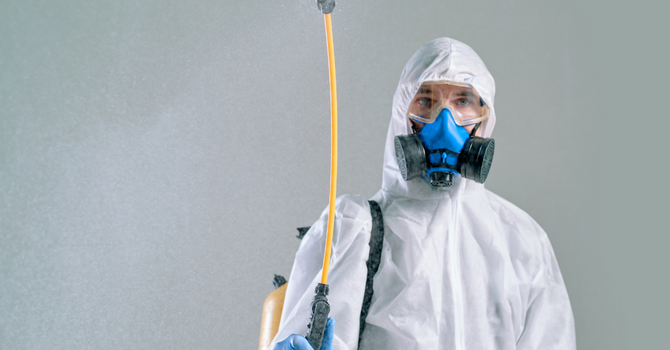
Source: Canva
Before you start shopping around for protective gear, you have to find the correct way to control the presence of contaminants and toxic products directly from the source. First, consider replacing certain techniques and products with safer procedures or putting in the appropriate ventilation system designed to extract any hazardous fumes or particles. You can also limit access to contaminated work zones to fewer employees.
Implementing a prevention program that includes risk training and the measures to take to protect oneself may prove to be the best tool to add to your arsenal as a contractor and employer. And that, no matter the topic (scaffolding, machinery, robots, etc.).
After having initiated and endorsed these solutions, if they’re deemed inadequate to sufficiently protect your workers from airborne contaminants or if oxygen levels are below 19.5%, wearing an industrial respirator is mandatory.
You’ll also need to set up a respiratory protection program. Indeed, for every type of mask distributed, you’ll need to explain to your employees the protective device's proper functioning, the reasons and contaminants that justify its use, also how it can be properly fitted. Some associations, like ASP Construction, handle such training.
A Guide to Respiratory Protections Used in Quebec
Each individual device has a unique level of effectiveness depending on its design and method of use. No matter the selected respiratory device, it must be certified by the National Institute for Occupational Safety and Health (NIOSH).
To assess the need to use a device, select the appropriate one, learn how to maintain it, or for more information, consult the complete guides based on the CSA Z94.4 Standard, offered by the CNESST or ASP Construction.
What are the different types of industrial respirators?
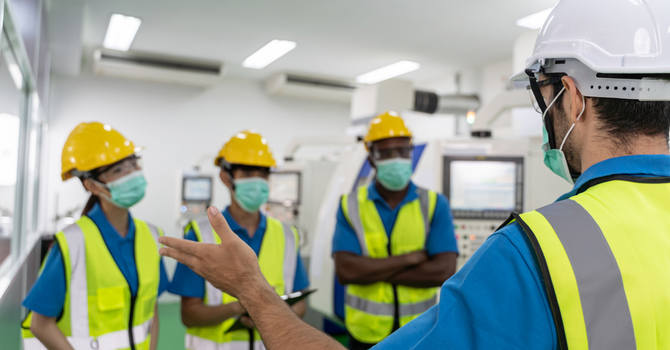
Source: Canva
Disposable face masks
Several models have a cup or flat fold styles. In this category, the following are available:
General purpose respirators - Suggested uses: sweeping, sanding, grinding, sawing, and bagging.
Welding respirators - Suggested uses: welding, torch cutting, and soldering.
Specialty respirators - Suggested uses: grinding, bagging, sanding, sweeping, when in contact with oil-based particles and other dust-producing activities.
Reusable respirators
Some apparatus models can be fitted with diverse technology:
Exhalation valve;
Adjustable nose clip;
Faceseal;
Electrostatically charged microfibre filter;
Carbon filter;
Flame-resistant welding web;
Adjustable straps;
etc.
Whichever one you choose, follow the manufacturer's instructions.
Air-Purifying Respirators (APRs)
These devices purify contaminated air with a filter or cartridge. As such, the air is filtered by these purifiers via battery power or simply by the wearer’s breathing.
Non-powered models: These are the most sought-after and used in the renovation/construction industry. When the filter cartridges are replaced, the information has to be logged into a registry to determine when next the cartridge should be changed or note any deficiencies. The duration of use is pre-determined; a worker can’t rely solely on their instinct or whether the device’s protection appears to be less effective to change the filter. There are full-face masks and half-masks available.
Powered respirators: Mainly used for asbestos removal, this type of mask has a pump that sucks in the air to eliminate any toxic fumes and sprays. There are half-masks and full-face masks, protective hoods for constant flow systems, as well as faceshield hard tops.
Supplied Air Respirators
These use an external air source to power the device and allow the worker to breathe, risk-free.
Supplied air models: A hose delivers clean air from either a cylinder (bottled air) that’s not strapped to the worker, a low-pressure pump, or a high-pressure compressor. Consult the CSA Z180.1-00 Standard regarding the air quality delivered. Full facepieces and half-facepieces, hoods for continuous-flow systems, and helmets with a faceshield are available.
Self-contained breathing apparatus: With this model, the air is supplied to the worker by an open-circuit, compressed air tank or chemically-generated oxygen (closed-circuit). This type of respirator allows one to enter areas where oxygen levels are limited or where there might be undetected, elevated levels of toxic gasses. Self-contained breathing apparatuses available in this category have full facepieces and sealed-seam respirator hoods.
How to Adjust the Fit of a Respirator
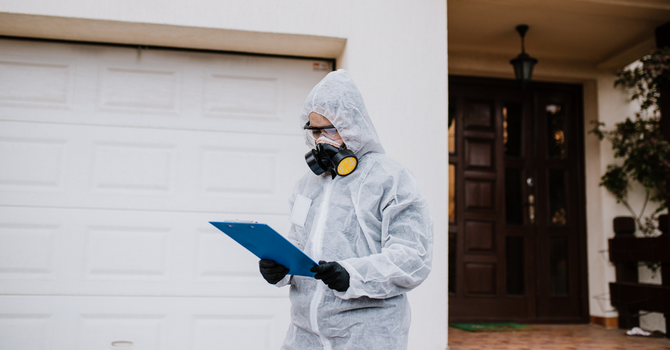
Source: Canva
It's worth trying on several different brands and sizes before making a final decision. In fact, the fit will vary slightly from brand to brand. Furthermore, to ensure the device is snug, as their use may be tested when talking, moving, with or without a beard and facial piercings.
Subsequently, your devices will be checked to ensure that they still fit your morphology. This could include weight loss or gain, new dentures, or any other changes that could affect the seal between the respirator and your skin.
The standard testing methods vary based on the type of apparatus:
For clean air-supplied respirators, you’ll need to block the air intake, inhale, and hold your breath. If the mask deflates and holds that position, it works fine. However, if it doesn’t remain as such, adjust the straps and make sure that there’s nothing between your skin and the edges of the mask. Repeat the test and switch to another brand or size if the outcome is still not successful. It’s a safety matter.
For particle respirators with a valve, you’ll need to block the valve tube and exhale slowly. The apparatus will expand. If you notice leakage around the face seal or if the apparatus doesn’t flare, carry out the same tests as mentioned above before moving on to a new mask.
Warning: Never wear an apparatus that fails the fit test and leak test.
Main Contaminants that Require Respiratory Protection
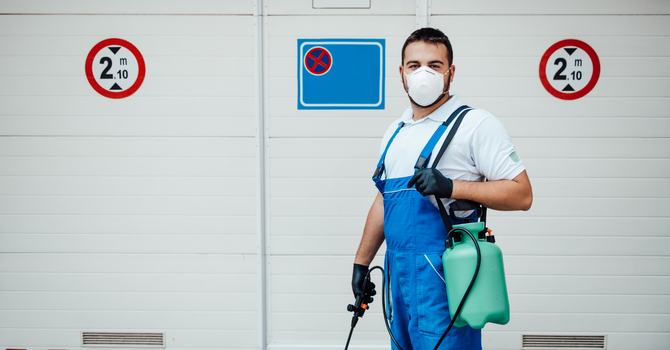
Source: Canva
Asbestos
Asbestos fibre was once commonly used to insulate homes and is still found in some building products like cement, pipes, select paints, etc. Since this material has had a bad reputation for a while now and is known to cause respiratory diseases, it’s only natural that it would end up featured on this list.
In fact, if an item containing asbestos is altered, for example during demolition, it’s highly likely that the hazardous contaminants be released into the air.
Exposure-related illnesses: Asbestosis, lung cancer, mesothelioma (cancer that occurs in the lungs’ lining).
Recommended apparatuses: According to the degree of contamination.
Silica
These quartz crystals made of silicon dioxide are often released into the air during the course of sawing, grinding, and drilling work done on structures built prior to 1990.
Exposure-related illnesses: Silicosis (incurable lung disease).
Recommended apparatuses: According to the degree of contamination.
Moulds
Humid or water-damaged areas are of concern here. As such, workers carrying out, for example, decontamination- or inspection-related tasks, claims adjusters or testers, and those who maintain ventilation systems or refurbish areas afflicted by natural disasters are at risk.
The mould spores released into the air can cause a variety of issues, hazards aren’t solely limited to inhalation, but through ingestion or eye contact or via a wound. As a matter of fact, the APCHQ offers training on the matter.
Exposure-related illnesses: Itchiness (eye, skin, nose, throat), allergies, asthma, ocular infection, dizziness, fatigue, nausea, etc. The severity of the symptoms depends on the duration and intensity of exposure as well as the type of mould involved.
Recommended apparatuses: Disposable or reusable respirators, powered air and supplied air respirators.
Manganese and hexavalent chromium
Manganese is often added to steel to enhance its durability, while hexavalent chromium is found in electrodes and solder wire. If you’re not wearing an effective respiratory apparatus, invisible particles produced by metal splashes could be hazardous.
Exposure-related illnesses: Paralysis, weakness, lethargy, difficulty speaking, itchiness (airways, skin, eyes), lung cancer.
Recommended apparatuses: Task-appropriate welding helmet.
Get new contracts for your construction or renovation company
RenoQuotes.com can help you get new contracts. We get new project proposals from clients seeking top-rated and trustworthy renovation professionals like yourself. To get started, simply fill in the form on our homepage (it only takes a few minutes) and receive information regarding potential clients by way of our services.
Dial 1-844 828-1588 to speak with one of our customer service representatives.
Last modified 2023-11-07
Looking for something else?
Related articles
The latest industry news, interviews, technologies, and resources.

Karine Dutemple • 07 Nov 2023
If you are a renovation contractor, you are likely to have difficulty finding qualified employees to fill vacancies in your business.

RenoQuotes.com • 07 Nov 2023
Concrete panels are durable, cost-effective, and viable options for both indoor and outdoor walls. Their list of attributes doesn’t end here: they're also easy to install, especially aesthetic-looking, thermal insulators, and soundproof. We’ll delve into why and how these panels should be installed.
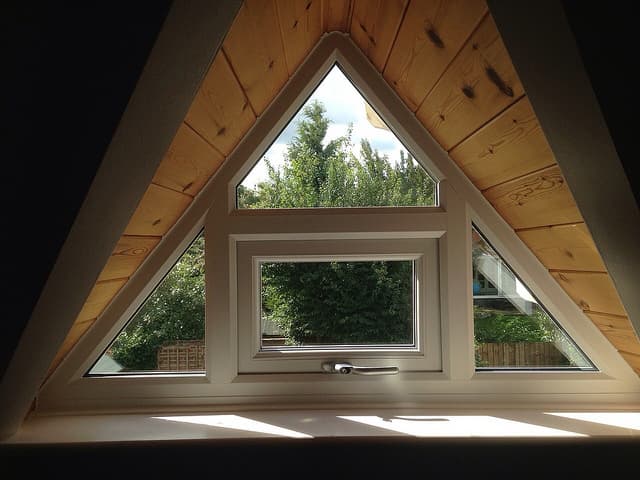
N/A • 07 Nov 2023
Who doesn’t love a cool summer breeze on a sizzling summer day? Being able to open and close your windows freely is one of the perks of having them. But of course, the mechanisms for opening and closing windows break occasionally. Window cranks, also known as casement operators, have a spline that slowly wears down from continued use and over time, and will need to be repaired or replaced.

Cynthia Pigeon • 07 Nov 2023
The roofing framework is the literal bones of your house. It ensures that your roof can withstand weather changes and, given its slope, whether it’s waterproof or not.

RenoQuotes.com • 17 Nov 2023
It's often said that small home improvement projects can make a huge difference. By opting for simple, yet visually interesting renovations, you'll revamp a room without having to deal with demolition, blueprint designs, and everything else that goes into a large-scale remodelling project.